During the good old days, water filter meant filtering the water with those candles. Later, the activated carbon and other filters came into being. However, have you ever wondered about what is better between water filters and reverse osmosis? We will try to find the differences between the two.
Quick Response
Choosing between a water filter and a reverse osmosis would largely be based on the personal preferences. the reverse osmosis systems are very effective in removing a wide range of contaminants such as salts and nitrates, bacteria, protozoa, viruses, arsenic, heavy metals, and minerals.. Water filters on the other hand, remove the physical contaminants such as sediments.
What is a Water Filter?
A water filter is an appliance that is used for filtering out the impurities from the potable water. It consists of one or more filtration media for reducing the number of contaminants from the water. One of the most common filtration option that you would find in the case of water filters is the activated carbon.

The activated carbon is a special category of charcoal and is treated with oxygen. The 1 gram of activated carbon has a surface area of over 32,000 feet and this sort of surface area attracts and traps the contaminants. This is achieved in a process called adsorption.
What is Reverse Osmosis?
Reverse Osmosis is a unique process or mechanism that can dramatically reduce a huge number of contaminants from the water. Osmosis refers to the process in which a solvent through a membrane from a solution with a low concentration of solute to a solution with a high concentration of solute.

Reverse osmosis reverses this process as is evident from the name of the process itself. In RO, you will a solution with a high concentration of solutes forced across a semi-permeable membrane to a solution with a low concentration of solutes. Our tests have indicated that the process is brought ahead by a force that is faster and powerful than the natural osmosis process.
3-stage water filter vs reverse osmosis
How do the 3 stage water filtration and reverse osmosis compare against each other? Which one should you choose? Let us try finding out.
Reverse Osmosis has its own set of advantages and benefits. Some of the remarkable benefits that you stand to gain with the reverse osmosis would include:
- It can filter and remove the totally absorbed solids.
- You can get quality water with a great taste and odor.
- It does not add any chemicals to your drinking water.
A few of the benefits that you stand to gain with reverse osmosis can include
Effectively removes sodium
The reverse osmosis process is capable of removing sodium completely. If your water source contains a lot of salts and your salt tastes salty, using reverse osmosis is the best option that can help remove the sodium salts.
Removes the lead efficiently
One of the most likely contaminants in the tap water is the lead. If you have an old infrastructure, it would go without saying that your drinking water consists of lead in most probability. This is because the old plumbing’s came with lead in their making. Reverse osmosis is capable of removing the lead very efficiently. It can also remove other metals such as iron, mercury, copper, and nickel.
Protection against microorganisms
Reverse osmosis has been known to be a powerful option against the microorganisms such as bacteria and virus. That way, you can be assured of staying safe from the health issues such as gastroenteritis. Our research indicated that the RO process reduces the level of microorganisms effectively.
It also softens your water
Reverse osmosis not only filters out your water, but it also lets you soften your water. The process can remove the calcium and magnesium. It does not leave the residue on your appliances which is yet another added advantage.
What is a 3 stage water filter?
The 3 stage water filter is a high end water filtration system that lets you get access to the best quality water. Under typical conditions, you would find the water from different sources containing several contaminants such as organic compounds, pesticides, herbicides, parasite cysts, hormones, and heavy metals (like lead and mercury). The three stage water filter is equipped with an ability to remove these ingredients and contaminants.
The three-stage filtration method in the water filter will include
Stage 1: Filtration stage
The water flows through the carbon filter with the activated carbon for removing chlorine contamination. The stage can also remove the sediments from the water.
Stage 2: Purification stage
Once the contaminants have been filtered out, the next stage purifies the water. The water is pushed through the fine carbon filter. This stage will remove all contaminants, including fluoride, mercury, lead, and other total dissolved solids.
Stage 3: Ultra purification stage
In the final stage of water filtration, where the water goes through another activated carbon filter. This stage removes all the contamination at a finer level of purification.
What is the difference between reverse osmosis and three-stage water filters?
The significant differences between the reverse osmosis and three-stage filters would include
- Filtration process: The three-stage filtration process involves mechanical filtration. This includes the sediment filters, activated carbon filters, and final filter. Reverse osmosis on the other hand uses semipermeable membrane to remove impurities, including dissolved solids, minerals, and other contaminants.
- Efficiency: The three stage water filter can remove many of the impurities like chlorine, sediment, and some chemicals. It cannot remove the dissolved solids making it a little incompetent in the case of the water sources contaminated with dissolved solids. Reverse osmosis an effectively remove the dissolved solids such as salts, nitrates, and fluoride.
- Maintenance needs: The three stage water filters would require the replacement of the filters every 6 to 12 months. The reverse osmosis proves requires the replacement of filter once every two to three years.
- Cost: The three stage water filter is more affordable, while the reverse osmosis system can be much expensive due to obvious reasons. However, it would be a better long term investment.
The table below should be a good one to understand the differences between the three stage water filter and reverse osmosis
| Aspect | 3 Stage Water Filter | Reverse Osmosis |
| Filtration Process | Mechanical filtration (such as sediment filter), activated carbon filtration, and final polishing filter (such as ceramic filter) | Semipermeable membrane |
| Effectiveness | Can remove many impurities including chlorine, sediment, and some chemicals, but may not be effective at removing dissolved solids such as salts, nitrates, and fluoride | Can remove up to 99% of all impurities including dissolved solids, making it a more effective filtration method |
| Maintenance | Requires replacement of filters every 6-12 months | Requires replacement of semipermeable membrane every 2-3 years |
| Cost | Generally less expensive than a reverse osmosis system, both in terms of initial cost and ongoing maintenance | Generally more expensive than a 3 stage water filter, both in terms of initial cost and ongoing maintenance, but can provide higher quality water and may be a better long-term investment for those concerned about the quality of their drinking water. |
Which is Better – Filtered Water or Reverse Osmosis?
Both filtered water and reverse osmosis systems have their own advantages and benefits. The choice between the two would largely be dependent on how you are going to use the system and whet impurities are you trying to remove.
It is worthwhile to consider checking out the following parameters when choosing the best among water filters and reverse osmosis:
Get your water tested
It is advisable to get your water tested to find which contaminants does it include. The water resting repot should provide you an idea into what you need to remove from your water. Based on our studies, you can make a choice between the water filters and reverse osmosis systems.
The water filters with activated carbon can remove the following impurities:
- Volatile organic compounds (VOCs) and other chemicals such as fuel oil, polychlorinated biphenyls (PCBs), dioxins, radon, and even radioactive material.
- It can remove some herbicides, pesticides, and organic contaminants.
- Removes disinfectants like chlorine
- Removes the bad taste and odor in tap water.
On the other hand, the reverse osmosis process can remove
- Salts and nitrates.
- Heavy metals like copper, arsenic and lead.
- Reduces mineral content from hard water.
- Some organic chemicals like fluorides
- Protozoa such as Giardia and Cryptosporidium.
- Viruses like Hepatitis A, Norovirus, and Rotavirus.
- Bacteria such as Salmonella, Shigella, and E. coli.
Reverse Osmosis vs Carbon Filter – How Do They Compare?
A carbon filter can effectively remove 10 to 15 percent of all the contaminants from the water supply. It can also remove a fraction of the dissolved solids. The reverse osmosis on the other hand is capable of removing 95 to 98 % of the total dissolved solids. If you belong to an area that has a high concentration of dissolve solids, a reverse osmosis system should be the best pick.
The table here below should help you arrive at the differences between the two filtration and purification methods:
| Aspect | Reverse Osmosis | Carbon Filter |
| Filtration Process | Uses a semipermeable membrane to remove impurities including dissolved solids, minerals, and other contaminants | Uses activated carbon to adsorb impurities such as chlorine, volatile organic compounds (VOCs), and some chemicals |
| Effectiveness | Can remove up to 99% of all impurities including dissolved solids, making it a highly effective filtration method | Can remove some impurities, but may not be as effective as RO at removing dissolved solids or certain contaminants such as fluoride |
| Maintenance | Requires replacement of the semipermeable membrane every 2-3 years | Requires replacement of the carbon filter every 6-12 months |
| Waste Water | Produces wastewater during the filtration process, which can be a concern in areas with water scarcity | Does not produce wastewater during filtration |
| Cost | Generally more expensive than a carbon filter, both in terms of initial cost and ongoing maintenance | Generally less expensive than RO, both in terms of initial cost and ongoing maintenance |
Inline water filter vs reverse osmosis – Which one should you choose?
A regular inline water filter can remove the dirt and sediment particles from your water supply. It cannot remove the dissolved chemicals. The reverse Osmosis process is capable of removing the sediment and other contaminants at the molecular level. It is effective in dissolved chemicals and salts that a regular filter cannot remove.
The inline water filter is small and portable in size. They work by introducing the physical barrier for filtering out the impurities. It can filter out sediment and chlorine, as well as some types of bacteria and viruses. They can also be easy to install and maintain. They also tend to be less expensive.
The reverse osmosis process on the other hand is larger, more complex systems that use a semi-permeable membrane to remove impurities from water. It is highly effective in removing a wide range of impurities from water, including minerals, bacteria, viruses, and chemicals. However, they can be quite expensive. These systems also need an extensive maintenance.
The table here should provide you a better glance at the differences between inline water filter and reverse osmosis:
| Feature | Inline Water Filter | Reverse Osmosis System |
| Size | Small and portable | Larger and more complex |
| Filtration Method | Physical barrier | Semi-permeable membrane |
| Effectiveness | Removes some particles, bacteria, and viruses | Removes a wide range of contaminants, including minerals, bacteria, viruses, and chemicals |
| Maintenance | Easy to install and maintain | Requires more maintenance and filter replacements |
| Cost | Relatively inexpensive | More expensive |
| Purpose | Improving taste and quality of drinking water | Comprehensive water filtration for drinking, cooking, and other uses |
3 stage vs 5 stage water filter – What are the differences?
The stages in the water filter system will ideally indicate the number of filtering options and components that form part of the filtration process. Thee more stages in a filtration process will translate into an effective and more powerful filtering capability.
A 3-stage water filter typically includes a sediment filter, a carbon filter, and a third filter that may remove contaminants such as heavy metals or VOCs (volatile organic compounds). This type of filter is suitable for basic water filtration needs and can remove most impurities found in tap water. It should be a good option if your water supply does not have any dissolved solids.
On the other hand, a 5-stage water filter includes two additional stages of filtration. In addition to the sediment and carbon filters, a 5-stage filter also includes a reverse osmosis (RO) membrane and a post-carbon filter. The RO membrane is responsible for removing dissolved solids, such as salts and minerals, from the water. The post-carbon filter ensures that any remaining odors or tastes are eliminated before the water is dispensed. The additional stages may not be specific and different manufacturers opt for different layouts and options.
Here is a comparison table to help you understand it better:
| Features | 3-Stage Water Filter | 5-Stage Water Filter |
| Number of filtration stages | 3 | 5 |
| Sediment filter | Yes | Yes |
| Carbon filter | Yes | Yes |
| Third filter | Yes (e.g. heavy metals, VOCs) | No |
| Reverse osmosis (RO) membrane | No | Yes |
| Post-carbon filter | No | Yes |
| Removes dissolved solids | No | Yes (RO membrane) |
| Maintenance required | Moderate | Moderate to high |
| Cost | Affordable | Moderate to expensive |
| Suitable for basic water filtration needs | Yes | No (overkill) |
| Suitable for advanced water filtration needs | No | Yes |
Please note that the stages as outlined in the above table are representative in nature. The actual number and processes of each stages would be dependent on the model and brand.
The concluding Thoughts
Filtration and reverse osmosis are the most commonly used water filtration or treatment techniques. Both of them have been observed to be much powerful and effective in providing you clean water. However, both of them have a few intrinsic differences. The discussion in the above paragraphs should ideally have helped you understand the major differences between the two filtration methods.

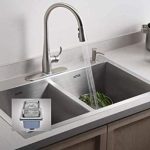
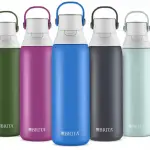
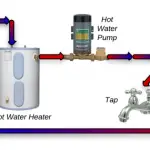
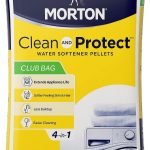
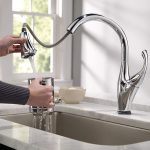
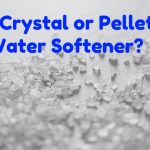




Add Comment